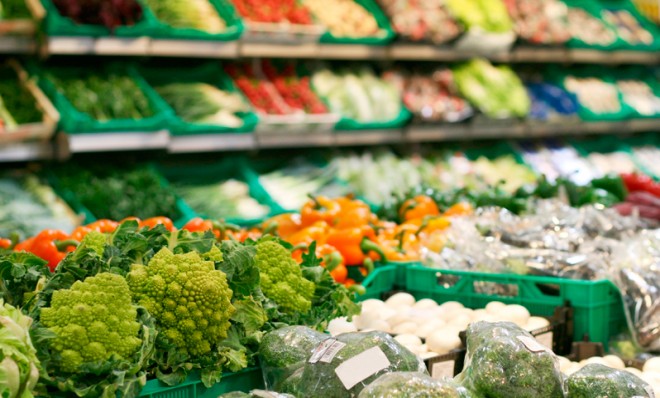Could online grocery shopping help save the planet?
Getting kale delivered to your doorstep may actually have a hidden environmental benefit


Purchasing groceries online has typically been seen as a convenient way to shop for food without having to put on pants. But according to a recent study, shopping in your underwear may also benefit the environment.
According to the study, conducted by University of Washington engineers, grocery delivery services can cut carbon emissions in half, and possibly more. The reasoning is fairly straightforward: Packed trucks can provide groceries to many people in a single trip, thus removing many cars from the road.
"A lot of times people think they have to inconvenience themselves to be greener, and that actually isn't the case here," said Anne Goodchild, an associate professor of civil and environmental engineering who worked on the study. "From an environmental perspective, grocery delivery services overwhelmingly can provide emissions reductions."
The Week
Escape your echo chamber. Get the facts behind the news, plus analysis from multiple perspectives.

Sign up for The Week's Free Newsletters
From our morning news briefing to a weekly Good News Newsletter, get the best of The Week delivered directly to your inbox.
From our morning news briefing to a weekly Good News Newsletter, get the best of The Week delivered directly to your inbox.
By surveying Seattle residents about their grocery purchasing habits, the researchers were able to simulate thousands of theoretical deliveries to generate the data that formed the basis for their findings. After running the numbers, they determined that delivery trucks produced 20 to 75 percent less carbon dioxide than the cars that would otherwise have been used to get groceries.
Why the disparity? The reductions were maximized in denser places, or when companies plotted efficient delivery routes that allowed them to hit many homes in one go. The difference between implementing efficient routes versus taking a more scattershot approach accounted for up to a 90 percent reduction in CO2 emissions alone, the study found.
That would suggest that much of the projected environmental impact is dependent on the population density of a given delivery area.
"Indeed, it's not the delivery service that's green so much as it is the city itself," says TIME's Bryan Walsh. "The population density of Brooklyn is over 34,000 per square mile, compared with a little less than 90 people per square mile for the U.S. as a whole. It can't be said enough: The greenest thing any of us can do is live in dense cities, or at the very least, support policies that enable greater population density."
A free daily email with the biggest news stories of the day – and the best features from TheWeek.com
However, the researchers found a reduction in greenhouse gasses in both urban and suburban areas, indicating that the environmental benefits may be felt even in less dense locales.
Still, the study focused solely on Seattle, so extrapolating the results to other cities and towns could be problematic. Plus, as The Washington Post's Brad Plumer notes, there are a host of other potential variables at play that were not considered in the study.
It didn’t compare delivery service against, say, taking the bus or walking to the store. (Presumably the latter would be the greenest option.) It didn’t look at the effects of refrigeration, since so few delivery trucks currently use this. It also didn’t consider that many people may stop by the grocery store while running multiple other errands anyway, or on the way back home from work. And so on. [Washington Post]
Jon Terbush is an associate editor at TheWeek.com covering politics, sports, and other things he finds interesting. He has previously written for Talking Points Memo, Raw Story, and Business Insider.
-
 Is Keir Starmer being hoodwinked by China?
Is Keir Starmer being hoodwinked by China?Today's Big Question PM’s attempt to separate politics and security from trade and business is ‘naïve’
-
 A peek inside Europe’s luxury new sleeper bus
A peek inside Europe’s luxury new sleeper busThe Week Recommends Overnight service with stops across Switzerland and the Netherlands promises a comfortable no-fly adventure
-
 Space data centers could be joining the orbit
Space data centers could be joining the orbitUnder the radar The AI revolution is going cosmic
